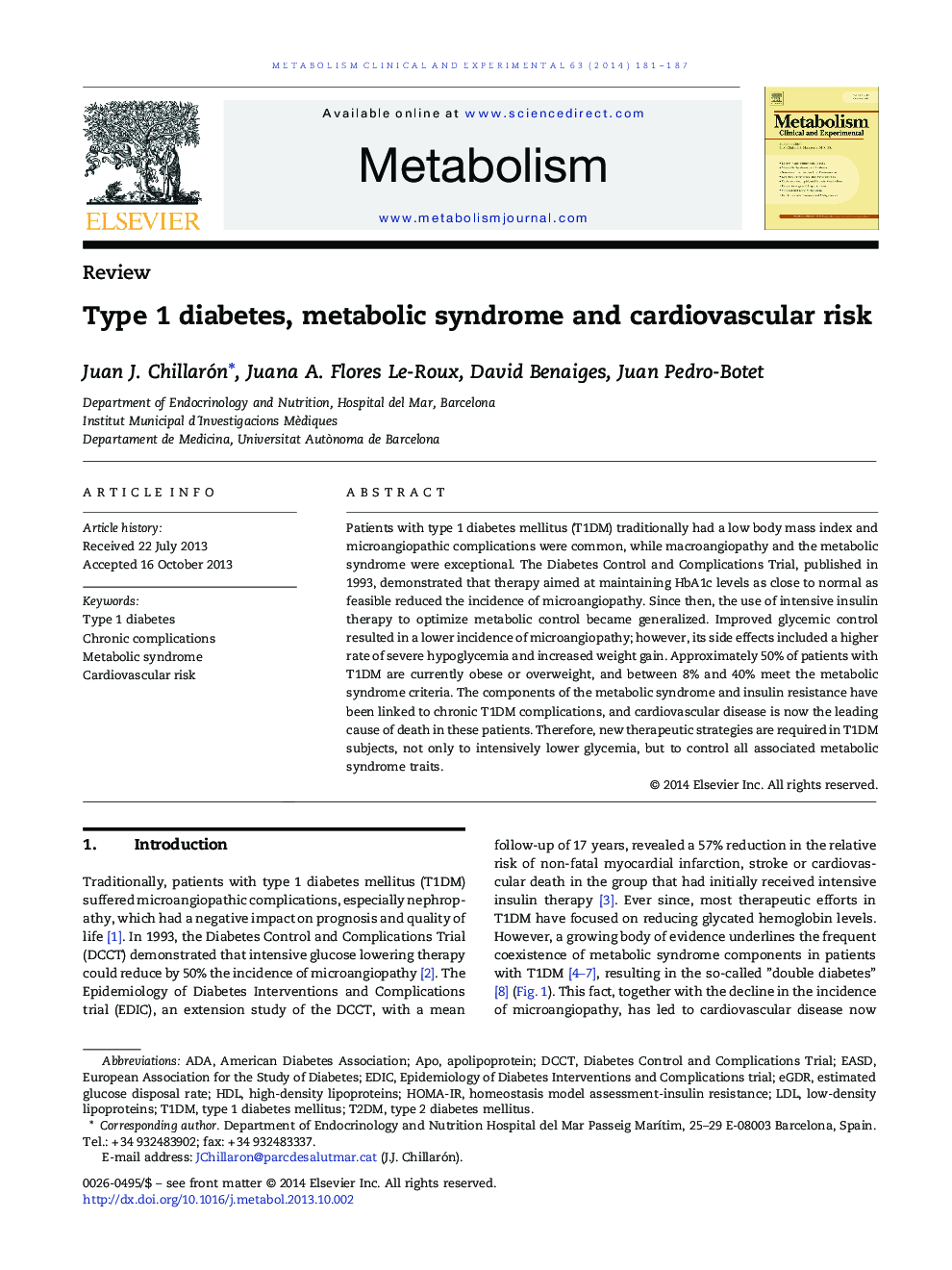| Article ID | Journal | Published Year | Pages | File Type |
|---|---|---|---|---|
| 2805842 | Metabolism | 2014 | 7 Pages |
Patients with type 1 diabetes mellitus (T1DM) traditionally had a low body mass index and microangiopathic complications were common, while macroangiopathy and the metabolic syndrome were exceptional. The Diabetes Control and Complications Trial, published in 1993, demonstrated that therapy aimed at maintaining HbA1c levels as close to normal as feasible reduced the incidence of microangiopathy. Since then, the use of intensive insulin therapy to optimize metabolic control became generalized. Improved glycemic control resulted in a lower incidence of microangiopathy; however, its side effects included a higher rate of severe hypoglycemia and increased weight gain. Approximately 50% of patients with T1DM are currently obese or overweight, and between 8% and 40% meet the metabolic syndrome criteria. The components of the metabolic syndrome and insulin resistance have been linked to chronic T1DM complications, and cardiovascular disease is now the leading cause of death in these patients. Therefore, new therapeutic strategies are required in T1DM subjects, not only to intensively lower glycemia, but to control all associated metabolic syndrome traits.
